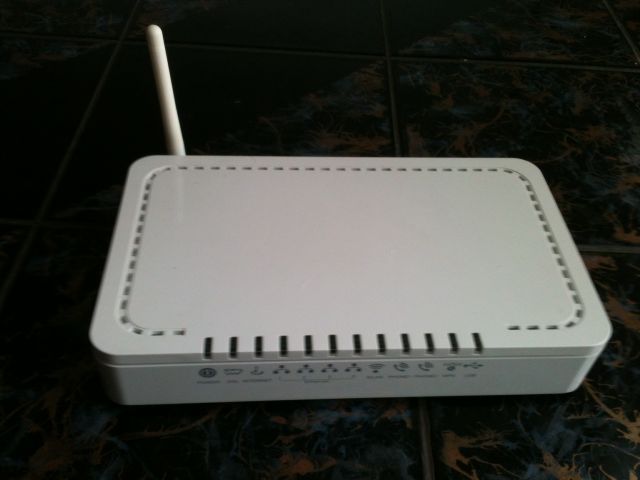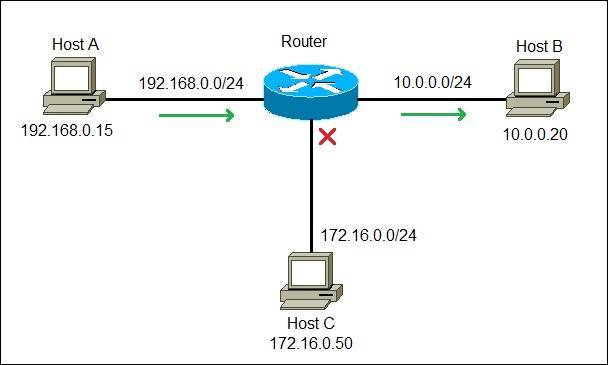A router is a network device that routes packets from one network to another. It is usually connected to two or more different networks. When a packet comes to a router port, the router reads the address information in the packet to determine out which port the packet will be sent. For example, a router provides you with the internet access by connecting your LAN with the Internet.
A router is most commonly an OSI Layer 3 device, since its forwarding decision is based on the information of the OSI Layer 3 – the destination IP address. Routers divide broadcast domains, provide full duplex communication, and have traffic filtering capabilities.
The picture below shows a typical home router:
If two hosts from different networks want to communicate, they will need a router in order to exchange data. Consider the following example:
We have a network of three hosts and a router. Note that each computer is on a different network. Host A wants to communicate with Host B and sends the packet with the Host B’s IP address (10.0.0.20) to the router. The router receives the packet, compares the packet’s destination IP address to the entries in its routing table and finds a match. It then sends the packet out the interface associated with the network 10.0.0.0/24. Only Host B will receive and process the packet. In fact, Host C will not even be aware that the communication took place.
Download our Free CCNA Study Guide PDF for complete notes on all the CCNA 200-301 exam topics in one book.
We recommend the Cisco CCNA Gold Bootcamp as your main CCNA training course. It’s the highest rated Cisco course online with an average rating of 4.8 from over 30,000 public reviews and is the gold standard in CCNA training:


